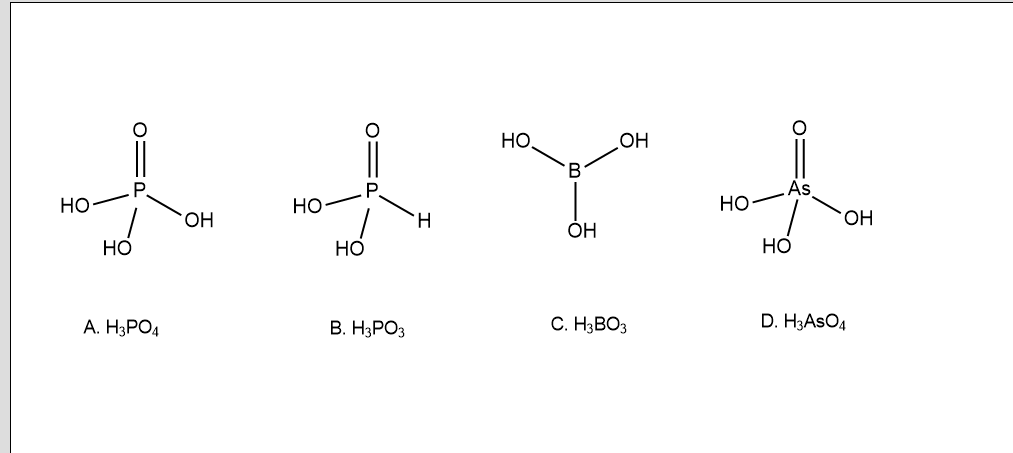
Which one of the following is dibasic acid?
Answer
413.4k+ views
Hint: draw the structures of all the compounds and count the number of hydrogens linked to the oxygen atoms. Only
Complete answer:
Dibasic acids are acids that can donate two protons or acids containing two replaceable hydrogen atoms. They are also called diprotic acids. Some of its examples are Sulphuric acid, carbonic acid, oxalic acid. when dissociation of dibasic takes place it occurs in two steps. It has two dissociation constants.
In the above question we are given some compounds and we have to identify which one among them is a dibasic acid. For this we will look into the structures of each of the options.
The structure of the compounds are as follows:

To identify which among them is dibasic, it is important to note that only those hydrogen ions will be replaced in aqueous state which is linked with the Oxygen atom. If the hydrogen atom is linked with the Phosphorus atom then there won't be any loss of such a hydrogen atom.
Taking this into consideration, if we observe the above image we see that all the compounds except
So, the correct answer is “Option B”.
Note:
The number of hydrogen present in the compound does not give the basicity of an acid. if in the compounds hydrogens are linked to oxygen atoms only then they will be considered as basic acids. If the hydrogen atom is directly linked the electronegative atoms are not replaceable. There are also monobasic and polybasic acids. In the acidity of bases, the number of hydroxyl ions that the basic molecule can produce in an aqueous solution is calculated.
Complete answer:
Dibasic acids are acids that can donate two protons or acids containing two replaceable hydrogen atoms. They are also called diprotic acids. Some of its examples are Sulphuric acid, carbonic acid, oxalic acid. when dissociation of dibasic takes place it occurs in two steps. It has two dissociation constants.
In the above question we are given some compounds and we have to identify which one among them is a dibasic acid. For this we will look into the structures of each of the options.
The structure of the compounds are as follows:

To identify which among them is dibasic, it is important to note that only those hydrogen ions will be replaced in aqueous state which is linked with the Oxygen atom. If the hydrogen atom is linked with the Phosphorus atom then there won't be any loss of such a hydrogen atom.
Taking this into consideration, if we observe the above image we see that all the compounds except
So, the correct answer is “Option B”.
Note:
The number of hydrogen present in the compound does not give the basicity of an acid. if in the compounds hydrogens are linked to oxygen atoms only then they will be considered as basic acids. If the hydrogen atom is directly linked the electronegative atoms are not replaceable. There are also monobasic and polybasic acids. In the acidity of bases, the number of hydroxyl ions that the basic molecule can produce in an aqueous solution is calculated.
Recently Updated Pages
Master Class 11 Economics: Engaging Questions & Answers for Success

Master Class 11 Business Studies: Engaging Questions & Answers for Success

Master Class 11 Accountancy: Engaging Questions & Answers for Success

Master Class 11 English: Engaging Questions & Answers for Success

Master Class 11 Computer Science: Engaging Questions & Answers for Success

Master Class 11 Maths: Engaging Questions & Answers for Success

Trending doubts
State and prove Bernoullis theorem class 11 physics CBSE

What are Quantum numbers Explain the quantum number class 11 chemistry CBSE

Write the differences between monocot plants and dicot class 11 biology CBSE

Why is steel more elastic than rubber class 11 physics CBSE

Explain why a There is no atmosphere on the moon b class 11 physics CBSE

1 ton equals to A 100 kg B 1000 kg C 10 kg D 10000 class 11 physics CBSE




